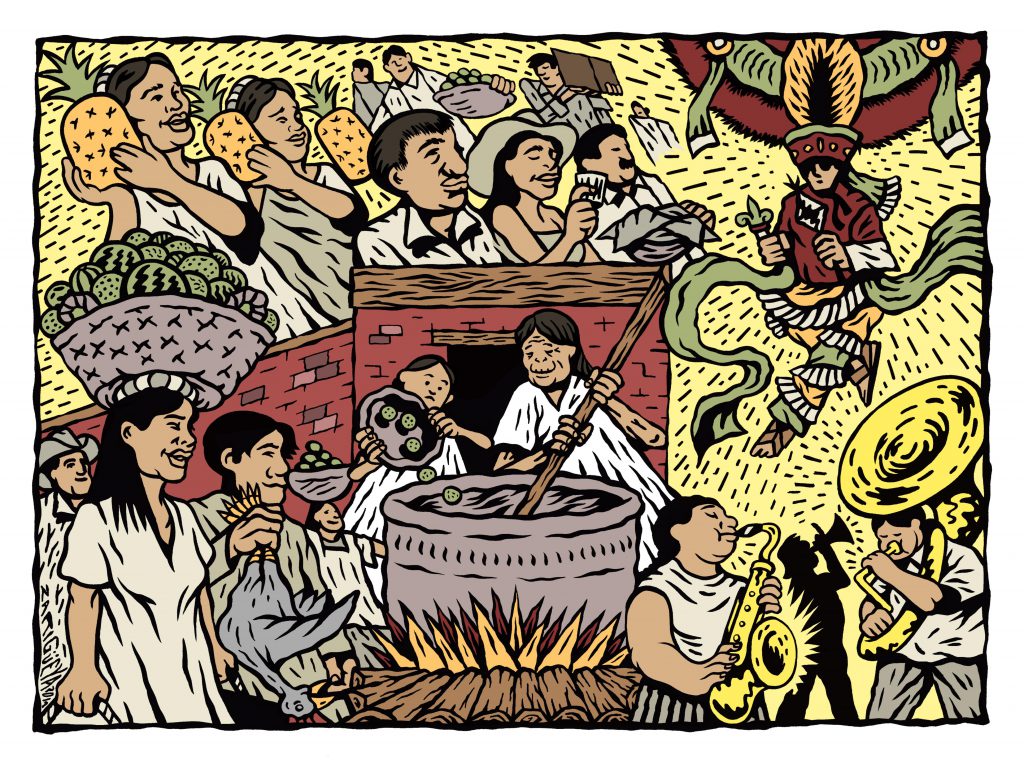
Chapter 5
Celebration time
"Like everything in life, every movement has a result. And the result of everyday life in a community is a celebration," Jaime Martínez Luna explains. La fiesta, or a celebration, is the fourth pillar of the concept of communality. "Celebration is a closure of a cycle," he states.
In many villages, celebrations happen on important days of harvest. The majority, however, are connected to the Saints of local churches or neighbourhoods. The assembly assigns tasks to particular committees and decides who will participate and in what way they will contribute to the preparations of the celebration. It is an occasion for everybody to take a rest from day-to-day life and forget about the challenges the community is facing.
Guelaguetza - mutual help
Guelaguetza or mutual help is an important yet hidden aspect in the organisation of celebrations. In the Zapotec language, the word guelaguetza means a present or an offering. It is an act of giving that always has to have a response from the one who receives it. This exchange makes all celebrations in Oaxaca possible - from those that happen at a family level to the ones that the whole village celebrates together. Everybody contributes to whatever they can. Some people bring corn, and others suggest that they can make fresh tortillas (traditional flatbread, usually made of corn), community bands play music throughout the celebration, usually without remuneration. Migrants send money or food to become part of the guelaguetza and the celebration.

Women from the community cook for days to please everybody. Fresh food, made of organic ingredients is an integral part of indigenous culture in Oaxaca. It is also a way to enjoy what Mother Nature has to offer if people take care of it. Almost every village has its speciality that is served at celebrations. In Yavesía, men go hunting deer in the forests days before the celebrations. The local delicacy is tamales - crushed maize filled with deer, wrapped in a corn leaf and steamed. Often women cook elaborate pastes of up to 32 ingredients called mole, with each region having its recipe.
Celebrations are opportunities to co-live. "Co-living is a clear sign that there is harmony in the way we do things. It shows that the whole community is satisfied with what has been done," comments Baltazar about the celebrations in his house.
Celebration time
"Like everything in life, every movement has a result. And the result of everyday life in a community is a celebration," Jaime Martínez Luna explains. La fiesta, or a celebration, is the fourth pillar of the concept of communality. "Celebration is a closure of a cycle," he states.
In many villages, celebrations happen at important days of harvest, and in the majority, however, they are connected to the Saints of local churches or neighbourhoods. The assembly assigns tasks to particular committees and decides who will participate and in what way they will contribute with the preparations of the celebration. Such an occasion for everybody to take a rest from the day-to-day life and forget about the challenges the community is facing.